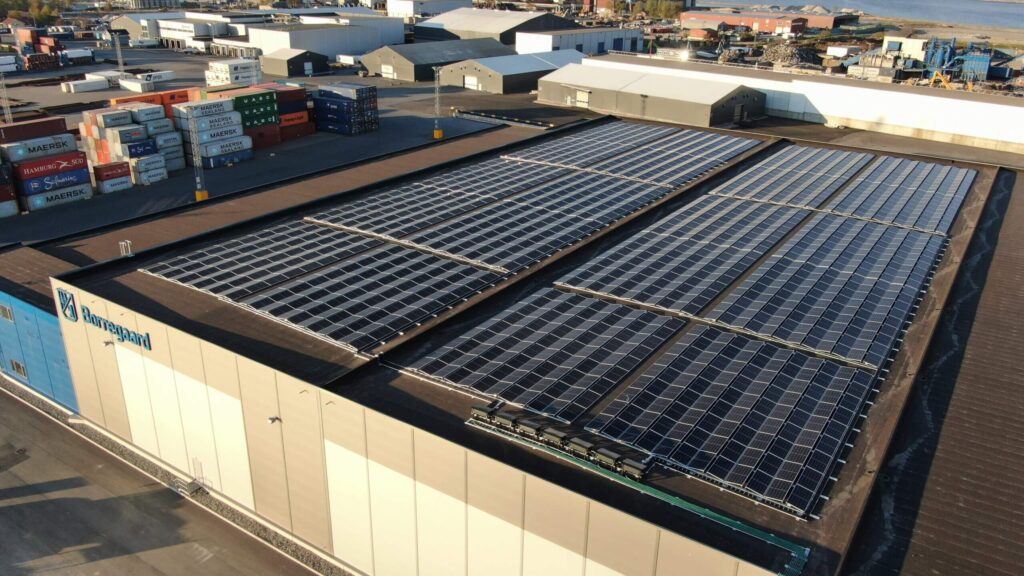In collaboration with the supplier Solcellespesialisten and the research company Smart Innovation Norway, Borg Havn will further electrify its operations by investing in a new solar cell plant of one megawatt.
- We want to have as good in-house production as possible. Now in the first phase, we have used half of the roof area at "Lager 14 - Borregaard" here in Øra. The plant that the solar specialist supplies has an expected annual production of 860,000 kWh, which makes up 57 percent of today's energy consumption here at the Øra terminal, says Pål Erling Johnsen, technical manager at Borg Havn.

In order to achieve the port's goal of covering the majority of its power needs with solar energy, the next phase of the pilot project therefore consists of investing in an even larger facility - of one megawatt.
- The solar energy will supply the internal power grid at the terminal and deliver shore power to vessels, power to the harbor cranes, warehouse buildings, refrigerated and freezer containers and our new battery system, explains Johnsen.
- It will be Norway's largest public solar plant, points out Anja Wingstedt, senior advisor for Smart Cities & Society at Smart Innovation Norway. She and Johnsen share the role of project manager for the pilot project that is part of the Smart Borg Harbor portfolio.
- Read also: Norway's largest public solar plant starts pilot project with battery plant g (tu.no)
Should make the storage of solar energy profitable
Alongside the solar system, Borg Havn has also invested in a battery system of 90 kW/195 kWh, which is mounted in a 10-foot container. The container contains three large data cabinets, in addition to a whiteboard, work table and lighting.
- We made this investment to supplement the power demand on our internal power grid and cut the large power peaks from cranes and other equipment that draw a lot of power for short periods. A major advantage of the design of the battery system is that it is portable, in that the cable to the container can be disconnected and the container can then be moved to another transformer if necessary, says Johnsen.
Battery systems for the storage of solar energy are today considered to be unprofitable, and are primarily used as a backup solution for those who want to protect themselves against power outages. Borg Havn and its partners hope to change that with their pilot project, which is part of the EU-funded research project E-LAND .

- In E-LAND, tools are developed to manage and optimize energy consumption. The aim is to learn what we can do with batteries and accumulated solar energy to limit electricity from the supplier, and to reduce power peaks. It is challenging with such a small battery, but it still gives us very useful information when we are going to use heavy vehicles with electric operation such as tow trucks and reach stackers, says Johnsen.
Through the research project, Borg Havn has opened up external management, and the system is managed by its own algorithms with a "peak shave" function and a team in Spain. All this can be overridden by Borg Havn if necessary, which ensures control in cases where, for example, a ship arrives that will require a lot of electricity.
Battery system with many applications
Solcellespesialisten has supplied the battery system, while the Norwegian supplier Pixii has developed the power electronics, built the battery system and made the control system.
Project manager Ulrik Rør at the Solcellespesialisten says that the system will eventually function as a so-called "black start" off-grid system, should a building lose power.
- In short, it means that if the power to the building is lost, the battery system will form a microgrid or "grid forming", and supply power to the building after the building has been separated from the power grid. That way, you are not dependent on the external power grid to recover from a power cut, says Rør.

